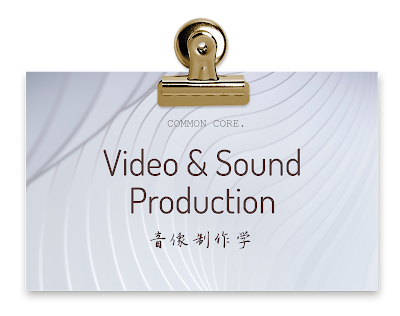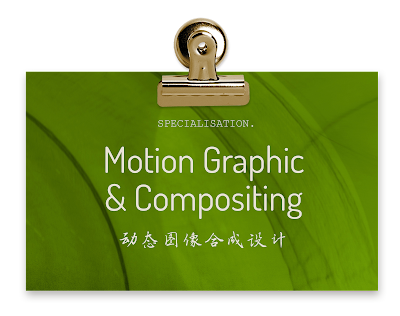💧 Exercises
NG MEI YING (0340563)
Video & Sound Production
Exercise
INSTRUCTION
LECTURE NOTES
17/04/20 (W1)
Video Production / Briefing
Today, Mr Martin briefed us about the project outline and also the props to prepare for the video shooting project. Mr Martin said that we were allowed to do video shooting buy using our smartphone however we needed to buy a tripod holder for the phone to ensure that we could shoot the video with 360 angles.
WEEK 1 TASKS:
- Install Premiere Pro, Audition, After Effect
- Choose a Zack King trick/video for Project 2 (with know-how)
- Post 3 favourite stop motion videos in blog
- Prepare 3 Public Service Announcement (PSA) topics for Final Project
24/04/20 (W2)
Video Production / Storytelling
WEEK 2 TASKS:
Video Production / Storytelling
Today, Mr Martin had a lecture with us about the difference between the story, narrative and plot. The storytelling in cinema was aiming to show something with the description of emotions. A story without any connection in between was boring and not attractive to the audience. The good story describes but bad story expands.
WEEK 2 TASKS:
- Plot Segmentation: Rebooted
- Write in point form
- Premiere Pro Editing Exercise 1
- Demo exercise https://youtu.be/Demo
- Exercise 1 with Doritos TV Video Clips
- Arrange the video clips in correct order & Export
- Reflective writing for both exercise
- Research on "Non-Linear Editing"
01/05/20 (W3): Labour Day No Class
Video Production / Video Trimming
Youtube Link: Week 3 Video Editing Lalin (Tutorial)
Non-linear video:
08/05/20 (W4)
Video Production / Story Structure
Act 1: Beginning / Setup / Develop
- Once upon a time...
- Everyday...
- Until one day...
Act One set up the world, characters (Protagonist), the character’s goal, as well as the conflicts or obstacles that are preventing them from achieving their goal. It also acts as a hook to build up the interest of the audience to accept the story settings. (Antagonist) the obstacle will first be started as the inciting incident, it may not be a villain, it can be the inner fear or the environment like the endless ocean etc. It’s usually the first 20-30 minutes of a film.
Act 2: Middle / Confrontation / Build
- Because of that...
- Because of that...
- Because of that...
Act Two raises the stakes and a set of challenges for the character to achieve the goal, escalating the conflict. The character has to confront the challenges as they were forced to make difficult choices between what is wanted and what is needed, it is known as the process of growing. On the contrary, a story with no conflict has no shape, pace and momentum.
Act 3: End / Resolution / Payoff
- Until finally...
- And ever since then...
- The moral of the story is...
Act Three resolves the story with either an achievement of that goal or failure that will reflect the theme of the film. It is the most intense moment of the film for the (Protagonist) as it should be in danger of losing everything they value most. (Audience may be on the edge of their seats). The choice the character made in act 1 & 2 is driven by their wants, now they face the ultimate test of accepts their needs (maybe not), and make choices they weren't capable of making in act one.
Youtube Link: Story Structure: Act 2
Youtube Link: Story Structure: Act 3
Read more: three-act-structure
Read more: The Interaction Of Spider-Verse’s Animation and Plot
Read more: Types of Camera Shots and Angles in Film
15/05/20 (W5)
Video Production / Framing & Storyboard
The lecture today had covered the history of the earliest cinema, cinematography, shot size, camera angle as well as screen direction. The earliest cinema movie was only using a single camera static shot that people found it was flat and boring after 20 years. Filmmakers started to break up the actions into shots and sequences. For a better understanding, I had created an infographic for the shot size as well.
- Cinematography: Filmmaker needs to imagine the shot like a maker, and watch it like an audience to find the problem and solve it critically.
- Shot Size: to define the rhythm, tone and meaning of the scene.
- Camera Angle: the rule of third is used to divide the scene into grids, 4 intersect points are the aesthetically pleasing spots to place the subject or to have perspective line converge.
- Screen Direction: refers to the direction an actor or object moves in relation to the camera position. The direction of the movement must be consistent between one edited shot to another, otherwise, the audience might become confused as to what is going on.
- Screen Direction (180-degree rule): is a cinematography guideline that states that two characters in a scene should maintain the same left/right relationship to one another.
- Extreme Close-up (ECU): to emphasize the extreme details. Like the eyes, mouth...
- Close-up (CU): to emphasize the details. Like the head or face.
- Medium Close-up (MCU): Use it when the expression is more important than the body.
- Medium Shot (MS): The most used shot in animation & film.
- Cowboy Shot (CS): frames the subject from roughly mid-thighs up. It is used in Westerns to frame a gunslinger’s gun or holster on his hip.
- Medium Wide Shot (MWS): To show certain action that takes place.
- Wide Shot (WS): To establish a location. Like a place with full body.
- Extreme Wide Shot (EWS): To show the board views of surroundings / aerial view.
- Over-The-Shoulder (OTS): To show your subject from behind the shoulder of another character. Because it emulates perspective, it’s common in conversation scenes.
- Over-The-Hip (OTH): Similar to over-the-shoulder in that the camera is placed with a character's hip in the foreground, and the focus subject in the plane of acceptable focus.
- Point of View (POV): Shows the viewer exactly what that character sees.
22/05/20 (W6)
Video Production / Frame Size & Lens
29/05/20 (W7)
Video Production / Storyboarding & Animatics
The lecture shared today was related to the storyboard and the animatics.
What is a storyboard?
What is an animatic?
A storyboard is a visual representation of a film sequence and breaks down the action into individual panels. It is a series of ordered drawings, with camera direction, dialogue, or other pertinent details. It sketches out how a video will unfold, shot by shot. It's is similar to a trial-run for your finished film, video, or commercial laid out in a comic book-like form.
- Drawings, reference images or photographs to represent each frame.
- A description of the shot — any relevant information on the action, dialogue, or composition.
- Shot specs — shot size, lens length, two-shot, etc.
- Arrows to indicate camera and/or character movement or how each shot connects to the next.
 |
| Traditional Storyboards: Basic sketches with arrows indicates camera movement. |
What is an animatic?
What is an animatic? An animatic is a string of storyboard images edited together with sound to illustrate how a sequence will flow in motion. It’s a next-level technique after storyboarding. They aren't always necessary, but they do provide a fuller sense of what the finished project will look like. An animatic is basically an animated storyboard. The same images you’ve already created as a storyboard are now put into a video and can include dialogue, sound effects, and music.
Read More: https://www.studiobinder.com/blog/what-is-a-storyboard/
Read More: https://www.studiobinder.com/blog/what-is-an-animatic-definition/
Youtube Link: Storyboarding & Animatics
12/06/20 (W9)
Video Production / Adobe Premiere Pro
No Tutorial Video Available.
26/06/20 (W11)
Video Production / Adobe Premiere Pro
Youtube Link: https://youtu.be/GgZv3xt4K54
03/07/20 (W12)
Video Production / Adobe Premiere Pro
Youtube Link: https://youtu.be/nuXx91jeC24
PROJECT 1
24/04/20 (W2)
Video - EX 1A / Plot Segmentation
Example of plot segmentation: https://frankiesaysreadmyreviews.wordpress.com
Video - EX 1B / Scenes Arrangement (Mint Candy)
REFLECTION: The first exercise was a warm-up exercise that allowed me to get familiar with the settings and functions of Premiere Pro. It was an easy exercise allowed me to have fun with it. For the plot segmentation exercise, it was very fun to watch and dissect the plot of a stop motion video.
01/05/20 (W3)
EX 2 / Scenes Arrangement (Doritos)
Mr Martin said this exercise is very similar to exercise 1.1 but the video clips are not incorrect order. We have to find out the cause and effect relationship in the clips. Hints: One location, shots are switching among three characters. Begins with ultrasound scan > husband eating Doritos > chain REACTIONS until the surprise at the end.
 |
Fig 4.0 Import the clips and watch all of them.
|
 |
Fig 4.1 Start to arrange them according to the correct sequence.
|
 |
Fig 4.2 Final arrangement.
|
Youtube Link: The complete arrangement of exercise 2 - Doritos
REFLECTION: This exercise was more challenging compared with the first exercise. I had to watch all of the videos over and over again while arranging them into the right order. I found that some of the clips were too confusing as they seemed to be alike. This exercise took me quite a long time to find out the correct order of the clips.
EX 3A / Video Trimming (Lalin)
For this exercise, we will learn about how to trim and apply the cross-dissolve effect to the video.
Youtube Link: The complete video of exercise 3 - Lalin
08/05/20 (W4)
EX 3B / Video Trimming & background music (Lalin)
For this exercise, we continue working on the trimming at the same time we need to insert the background music. I set the in 50 seconds and insert it onto the new audio track, the original sound of the video was muted. The background music was matching up the rhythm of the video to manifest the smooth yet coordinated plot direction.
Youtube Link: The complete video of exercise 3B - Lalin with music
EX 4 / Video Trimming (Emo Soap)
For this exercise, the student has to find out the sequence of the video clips, arrange them into a suitable order as well as for trim it into a better version by referring to the original "AKE" Thailand commercial video.
Youtube Link: Video Exercise 4 - Emo Soap
05/06/20 (W8)
EX 5 / Colour Adjustment in Pr
For this exercise, the student has to do some colour adjustment based on the video clips given.





Comments
Post a Comment